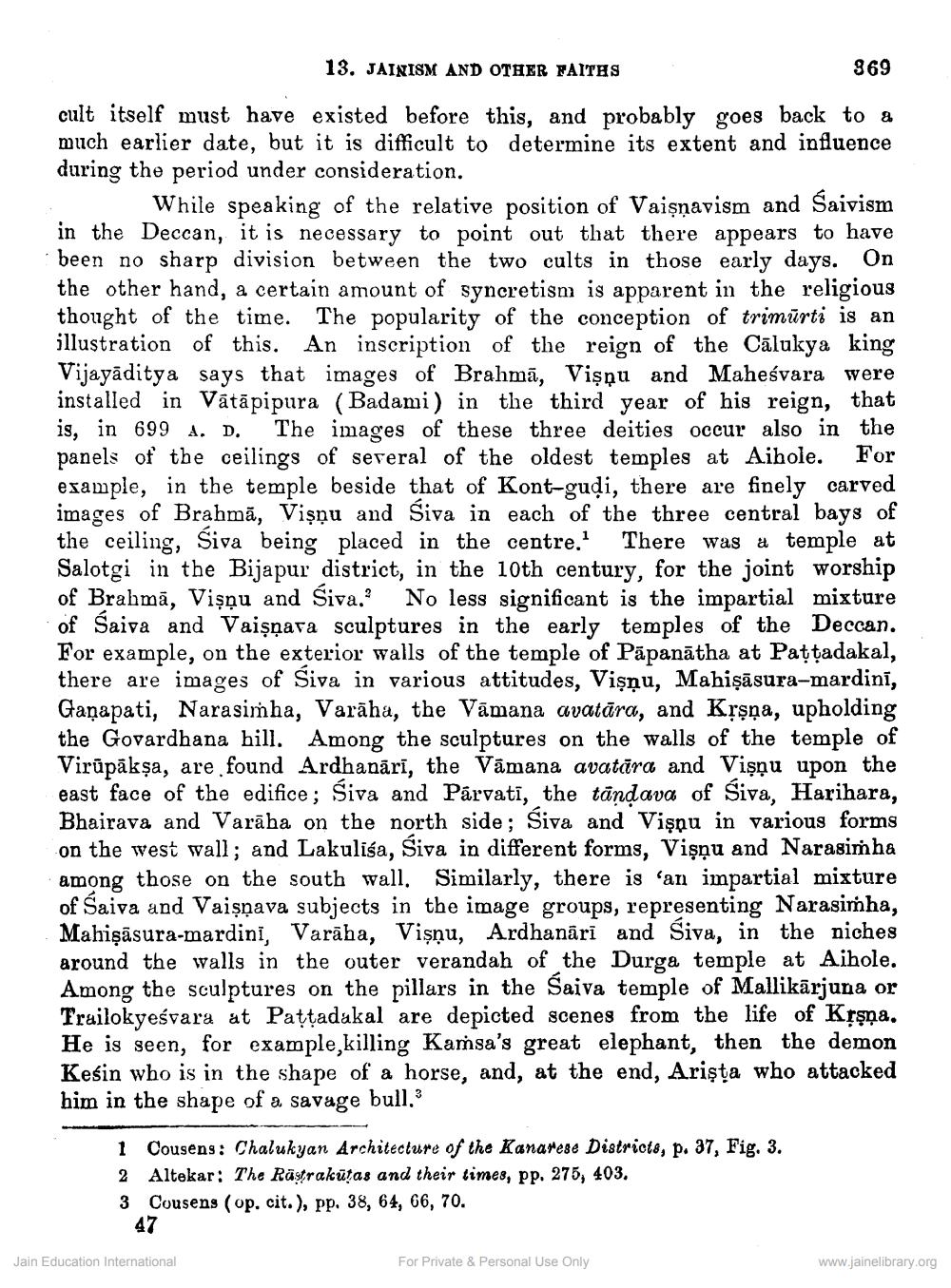________________
13. JAINISM AND OTHER FAITHS
369
ueration.
cult itself must have existed before this, and probably goes back to a much earlier date, but it is difficult to determine its extent and influence during the period under consideration.
While speaking of the relative position of Vaişņavism and Saivism in the Deccan, it is necessary to point out that there appears to have been no sharp division between the two cults in those early days. On the other hand, a certain amount of syncretism is apparent in the religious thought of the time. The popularity of the conception of trimūrti is an illustration of this. An inscription of the reign of the Cālukya king Vijayāditya says that images of Brahmā, Vişnu and Maheśvara were installed in Vâtāpipura (Badami) in the third year of his reign, that is, in 699 A. D. The images of these three deities occur also in the panels of the ceilings of several of the oldest temples at Aihole. For example, in the temple beside that of Kont-gudi, there are finely carved images of Brahmā, Vişņu and Siva in each of the three central bays of the ceiling, Śiva being placed in the centre. There was a temple at Salotgi in the Bijapur district, in the 10th century, for the joint worship of Brahmā, Vişņu and Siva? No less significant is the impartial mixture of Saiva and Vaişņara sculptures in the early temples of the Deccan. For example, on the exterior walls of the temple of Pāpanātha at Pattadakal, there are images of Siva in various attitudes, Vişnu, Mahişāsura-mardinī, Ganapati, Narasimha, Varāha, the Vāmana avatāra, and Krşņa, upholding the Govardhana hill. Among the sculptures on the walls of the temple of Virūpākşa, are found Ardhanārī, the Vāmana avatāra and Vişņu upon the east face of the edifice; Siva and Parvati, the tändava of Siva, Harihara, Bhairava and Varāba on the north side; Siva and Vişnu in various forms on the west wall; and Lakulisa, Siva in different forms, Vişņu and Narasimha among those on the south wall. Similarly, there is ‘an impartial mixture of Saiva and Vaisnava subjects in the image groups, representing Narasimha, Mahisāsura-mardini. Varāha, Visnu, Ardhanāri and Siva, in the niches around the walls in the outer verandah of the Durga temple at Aihole. Among the sculptures on the pillars in the Saiva temple of Mallikārjuna or Trailokyeśvara at Pattadakal are depicted scenes from the life of Krşņa. He is seen, for example,killing Kamsa's great elephant, then the demon Kesin who is in the shape of a horse, and, at the end, Arişta who attacked him in the shape of a savage bull,
1 Cousens: Chalukyan Architecture of the Kanarese Districts, p. 37, Fig. 3. 2 Altekar: The Rästrakūtas and their times, pp. 275, 403. 3 Cousens (op. cit.), pp. 38, 64, 66, 70. 47
Jain Education International
For Private & Personal Use Only
www.jainelibrary.org




